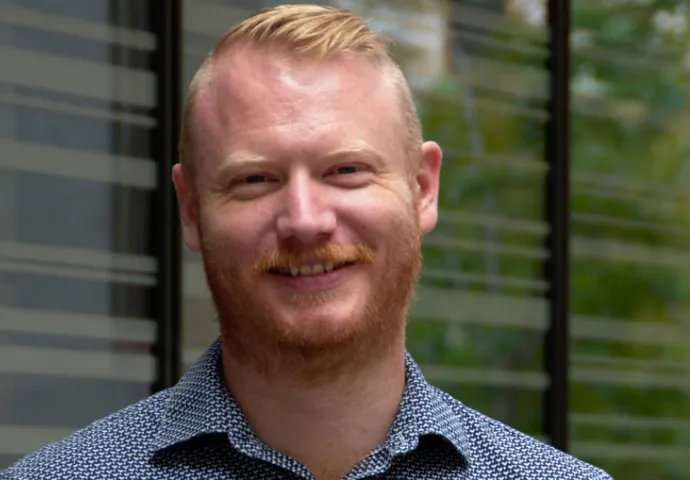Q-CTRL QCHack challenge winners: Team HASAA

QCHack is a jointly organized quantum computing hackathon, established by the Quantum Coalition, which is an intercollegiate group of quantum computing enthusiasts founded by Yale and Stanford Quantum Computing students. The event had over 2,100 participants from 80+ countries.
We were incredibly excited to be one of the major sponsors of QCHack alongside Google and IBM. The event provided us with the opportunity to reach and educate the next generation of quantum computing scientists.
The Q-CTRL QCHack Challenge
This was the first hackathon the team at Q-CTRL had the opportunity to participate in. I personally love competing in a hackathon and prior to joining Q-CTRL had participated in a couple myself. However, on this occasion, I was excited to be on the other side of the fence and able to learn what it was like to create and run a challenge.
The initial focus for us as sponsors of QCHack was to ensure we focussed a large amount of our time and effort on producing a challenge that would expose participants to some of the real problems facing the quantum computing industry. The participants only had 24-hours to complete the challenge so we needed to ensure we also set a reasonable scope.
We ultimately settled on the challenge requiring participants to design microwave pulses that implement high-fidelity gates for a superconducting qubit simulated in the cloud. The qubit was imperfect - it had noise, leakage to higher-lying energy levels, and bandwidth-limits on the control lines - but none of that was told to the challenge participants up front. Teams were provided with our product Boulder Opal and given complete freedom on how they designed and improved the performance of their gates.
It was exciting to see so many participants attempt our challenge. We wanted to ensure there was support from Q-CTRL throughout the entire challenge, so we rostered members of our team as mentors and technical support across the whole 24 hours. Q-CTRL’ global presence helped here, we had people rostered from both our LA and Sydney offices, which covered both the day and night.
It was a truly collaborative effort for us as a team and we were incredibly proud to receive really positive feedback on our efforts from the challenge participants. Here’s just some of the positive feedback we received in Discord throughout the event:

I’m also proud of the fact our Boulder Opal infrastructure was able to handle a 10x spike in traffic and execution of 250,000 tasks within a 24-hour period with zero downtime.
Q-CTRL QCHack Challenge winners: Team HASAA
Despite spanning multiple time zones, Team HASAA were able to collaborate incredibly well during the hackathon. The team were flexible in their approach and tried multiple strategies to ultimately identify the best way to solve the challenge. We were incredibly impressed that team HASAA were able to produce a NOT gate with 99.46% fidelity.
From all of us at Q-CTRL, congratulations to the members of Team HASAA 👏 It was a pleasure working with your team.
Henry Makhanov
Amir Ebrahimi
Arjun David Rao
Md. Sakibul Islam
Alberto Maldonado Romo
After the hackathon we had the opportunity to catch-up with Team HASAA to get their feedback on the challenge. Here are some of the key takeaways from that discussion:
Q: As part of QCHack 2021 there were a number of challenges you could have participated in? What was your team’s motivation for selecting the Q-CTRL challenge?
A: Some of us had participated in other hackathons and those generally have been geared towards working through some application of VQE, a QML related problem, or some of the quantum algorithm canon. From that perspective having a different type of challenge was a breath of fresh air. We were glad to take on the Q-CTRL challenge because of its relevance to near-term quantum computers and its connection to the fundamental physics of quantum computing hardware. We had a meeting earlier in the week to discuss different pros/cons of the challenges and frameworks that would be used. Deciding on the Q-CTRL challenge early on made us ready to start the challenge without hesitation when it was released.
Another pertinent factor is that we were able to see the quality of documentation and videos that Q-CTRL already had in place. Many of us read and watched those introductory videos prior to the start of the challenge. So, there was a level of trust in Q-CTRL as an organization to deliver the necessary information we would need to succeed. Finally, sitting through the workshop session offered by Q-CTRL during QCHack sealed the deal because of how the presenters presented the research work they were doing themselves, how Boulder Opal worked as a platform, and how this would connect to the challenge we were about to embark on.
Q: What was the biggest obstacle you faced during the Q-CTRL challenge and how did your team overcome this?
A: There were two obstacles that we faced: the first one was that everyone was in a different time zone and we did not know each other before the hackathon. We had little time to decide on the challenge and our communication was asynchronous before the hacking commenced. Ultimately, we decided to work on the Q-CTRL challenge because it fit our mutual interest in Quantum Error Correction and we enjoyed the presentation. Our biggest challenge became our strength because having teammates in different time zones meant that once one person finished their work and went to rest the other was there to pick up and continue. We were able to get this advantage because of the good team organisation that our team leader made that ensured that we were on the same page at all times.
The other obstacle that stood out was how to understand several new concepts in a short span of time. We had a very short time to understand and dig through the Boulder Opal codebase. We have a great team chemistry and took time to explain what we understood to each other and share useful information in our group chat. I would like to highlight that Q-CTRL Application Notes are well written, practical and easy to understand. Q-CTRL had a 24 hour mentor room during the hackathon, where we were able to get answers to whatever questions we had. Finally, the resources and facilities given at the competition were absolutely top-notch and they helped us overcome both of the challenges that we faced.
Q: Our team was impressed that within 24 hours you were able to produce a NOT gate with 99.46% fidelity. Can you describe your experience with learning to use Boulder Opal?
A: When we decided to take on the Q-CTRL challenge we faced a choice as to which approach to take: Optimal Control, Robust Control or Automated Closed Loop Control. We determined that Optimal Control and Automated Close Loop Control were most interesting for us to explore, so we broke up to study them more efficiently. One part studied all the related documents in Boulder Opal for optimal control and the other part went through the notebook for the closed loop automated control and related youtube videos. We studied all the necessary information by closely consulting the documents and discussing with the Q-CTRL team. After roughly 6 hours we determined that we have achieved more promising results with the Automated Close Loop Control and we decided to put all of our energy towards perfecting that approach. The main challenge for winning was getting proper pulse duration and optimizing it. The most difficult part to implement was the proper infidelity functions for the NOT gate and the H gate. Once we figured the proper infidelity functions, we spent our time experimenting with different pulse lengths and segments until we found the most effective combination. Our persistence and willingness to experiment has yielded us the high fidelity gates and ultimately brought us victory.
It was quite difficult to comprehend the related information within 24 hours, but the documentation shared in the Boulder Opal was quite helpful. Explanations were lucid, documentation carefully explained all the necessary steps such as the proper connection to the qubit in the cloud and the related code was well organized and clean. We really enjoyed using Boulder Opal, as we never faced the documents too difficult to understand and mentors were quite helpful as they helped and guided us when we were going astray.
Q: What did your team learn about quantum control and quantum computing more broadly from having participated in the Q-CTRL challenge?
A: Competing in the Q-CTRL challenge was an enriching experience and lined up perfectly with our interests. We have gained both the practical and theoretical experience by working on your challenge. It is a known fact that in the realm of Quantum Computing the hardware is playing catch up with the theory. Currently, we are facing a problem of noisy qubits, which spawned a fascinating new area of active research called Quantum Error Correction. While everyone on the team knew about the basics of the field, no one knew of any real ways of how to resolve the issue of noisy qubits. Working on your challenge helped us learn practical solutions to the problem. While it is true that having an expansive theoretical knowledge is crucial in the nascent field such as Quantum Computing, having practical experience is just as important. We have extensively read through the documentation of different control methods, implemented several different ideas used in your work, and had several valuable conversations with your team on our way to develop a better theoretical understanding of quantum computing, quantum control, and control engineering in general.
Q: What would your advice be to future hackathon participants?
A: Hackathons are a great experience so don’t be afraid of trial and error, you will figure out what is good for you! Nevertheless we have some tips that helped us out. Firstly, our team advocates coffee! Grab a cup or two during the hackathon but make sure you don’t go overboard. It’s a well known fact that coffee = code. Secondly, get as comfortable as you can with the code syntax before starting. You’ll sharpen these skills during the hack, but the less time you are debugging the more time you can dedicate to the project. Thirdly, the code is important, but don’t forget to plan what you are doing. Structure is important, because you can easily get lost in the code and lose track of your goal. The fact we planned and split up meant that we could easily transition and focus on closed-loop automated optimization. We use some cool software called Miro to brainstorm ideas and plan our approach, but even a pen and paper does the job.
Last but not least, enjoy it! Hackathons are an amazing way to connect with people across the world and collaborate on something you all find interesting. Doesn’t matter if you have never multiplied a matrix or imported a module, you have to start somewhere and hackathons are a great way to get stuck in.
We look forward to participating in future hackathons.



